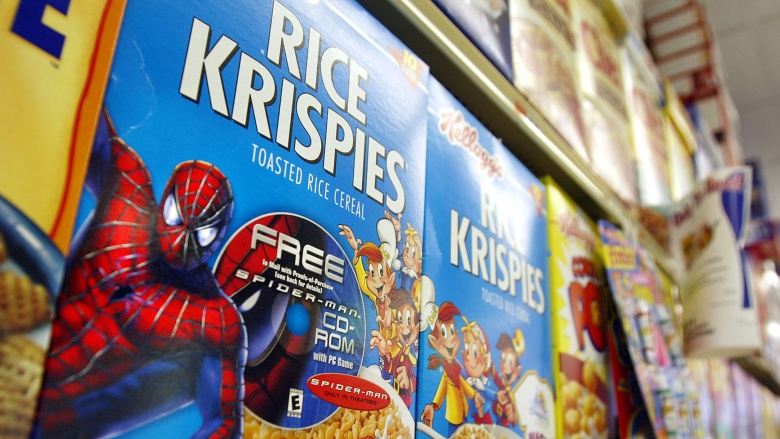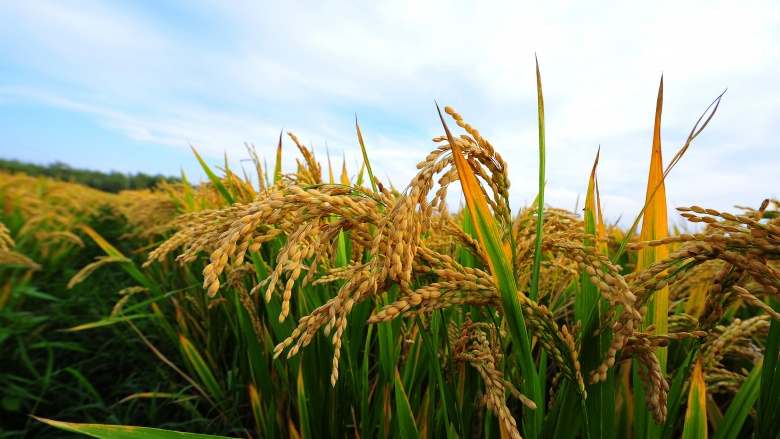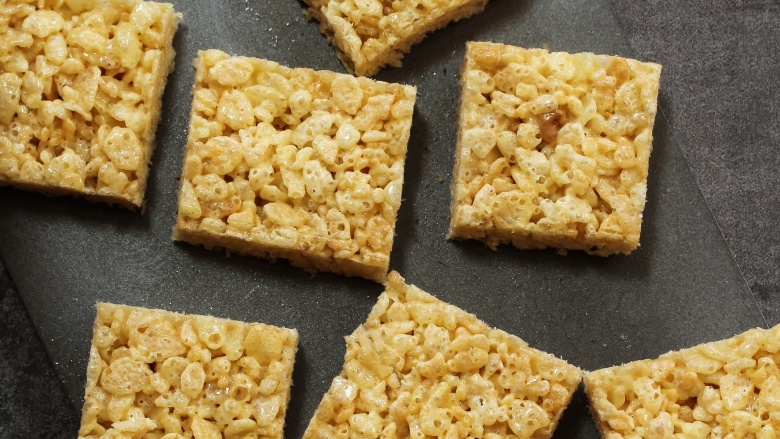The Real Reason Rice Krispies Snap, Crackle, And Pop
When Rice Krispies entered the cereal scene in the beginning of the 20th century, America had only just begun to embrace cold cereal as a breakfast choice. Over the next 80 years, it would capture the attention of families not just for its sweet taste and crunchy texture, but also for the crackly sound that was heard as soon as the toasted grains made contact with milk. The mystery of why this cereal seemingly sizzled in the bowl wasn't concerning, but it was a fascinating novelty. The country had Rice Krispies and a host of other cereals to choose from, making breakfast more convenient than it had ever been. While sales have slipped from $9.6 billion in 2012 to $8.75 billion in 2015, Americans have remained pretty loyal to Rice Krispies for their popular snack time treats and the reliable crunch and crisp texture that comes with each bite. So why do Rice Krispies snap, crackle, and pop? Let's get into it.
The early days of cereal
Before it came in colorful boxes covered with cartoon illustrations, games, and trivia on the back, and prizes inside, cold cereal got its start in the mid-1800s as spa food. Its inventor was health advocate James Caleb Jackson. Jackson operated a sanatorium in eastern New York where guests took restorative water treatments and ate healthful vegetarian meals. One of those meals, his cold cereal, called Granula, was made by baking a mixture made with graham and bran flour and then crumbling it into bite-size pieces. This cereal required a long soak in milk before it was soft enough to eat, but the dish caught the attention of John Harvey Kellogg, who came to Jackson's spa for the water cure and inspired him to create his own version. J.H. Kellogg served the convenience breakfast dish at a health spa he ran in Battle Creek, Michigan.
With his brother, William Keith Kellogg, J. H. Kellogg began experimenting with more grains — creating wheat flakes (by accident) and corn flakes that they sold to his patients through the mail. In the early 1900s, William Kellogg went rogue, establishing the Battle Creek Toasted Corn Flake Company and beginning a mass advertising campaign to sell his cornflakes. The brothers fell out over exclusive rights for use of the Kellogg name. William Kellogg won the fight, and in 1922 the Kellogg Cereal Company was born. Five years later, with a new process for turning rice into airy, toasted grains, William Kellogg put another iconic cereal on the market. This new cereal, named Rice Krispies, had a distinct characteristic: it made noise when milk was added to the bowl.
From rice grain to crispy cereal
Unlike oatmeal, boxed cold cereals are precooked, dried, and ready to eat — with or without the addition of milk. Most cereals start as whole grains that are oftentimes processed to remove their outer bran layer before continuing on to become ready-to-eat breakfast fodder. Depending on the type of cereal being made, those whole grains are either ground into flour or are cooked (along with sweeteners, flavorings, and nutritional supplements) until they're softened. Rice Krispies fall into the latter category. After cooking, each grain of rice is processed to become that cereal with the famous snap, crackle, and pop.
While its puffed rice cousins are made using a pressurized machine that inflates and pop grains, Rice Krispies are simply baked to give them their puffy character. Cooked and cooled rice, while it still retains some moisture, is partially flattened under rollers — called "bumping." The grains are then dried a bit more — but still not all the way. Then in the final step, the grains are rapidly baked in an super-hot oven at about 600 degrees. That extreme heat blast causes each grain to expand and develop air pockets inside the grains (called oven-puffing) and creates the cereal's delicately crisp texture. So why does it sound like the cereal comes alive when milk is added? What you're hearing is the sound of those toasted bubbles breaking from the pressure of the milk as it pushes air against those fragile baked grain walls that subsequently shatter.
Rice Krispies for breakfast, lunch, dinner, and dessert
The cereal may have begun as a breakfast food, but about 15 years later Rice Krispie treats, possibly equally as iconic as the cereal itself, got their start. The sweet snack was originally created for a Camp Fire Girls fundraiser by a cook in the Kellogg Cereal Company test kitchen. The recipe was published in 1941 and has become an instant classic and beloved treat thanks to the crunchy rice cereal and gooey marshmallow that holds it all together. The original recipe is solid, but variations have kept the treat moving with the times.
Give your next batch a grown-up twist with aromatic coffee and the tart fruity bite of dried cherries. For a simple variation, substitute chopped apricots for the cherries and omit the coffee. Or combine classic Rice Krispie cereal with colorful Fruity Pebbles for a confetti effect. Skewering each treat on a lollipop adds to the overall whimsy of this sweet.
You can bring smoky-sweet flavor to the marshmallow-rice square with a sprinkle of cooked and crumbled bacon and a drizzle of maple syrup. Or as an alternative, omit the bacon and add a pinch of smoked paprika for a vegetarian variation.
One of the world's most innovative chefs, Ferran Adria, used Rice Krispies for a mock paella that won rave reviews and demonstrated that the oven-puffed cereal's properties have a place in savory dishes just as much as they do in desserts. And another recipe employs crisped rice cereal as a coating for super crunchy, tempura-like shrimp. For a spiced topping on a vegetable side dish, toast Rice Krispies in a skillet along with spices and a little oil then sprinkle over vegetables just before serving.
However you do it, enjoy the pop!



